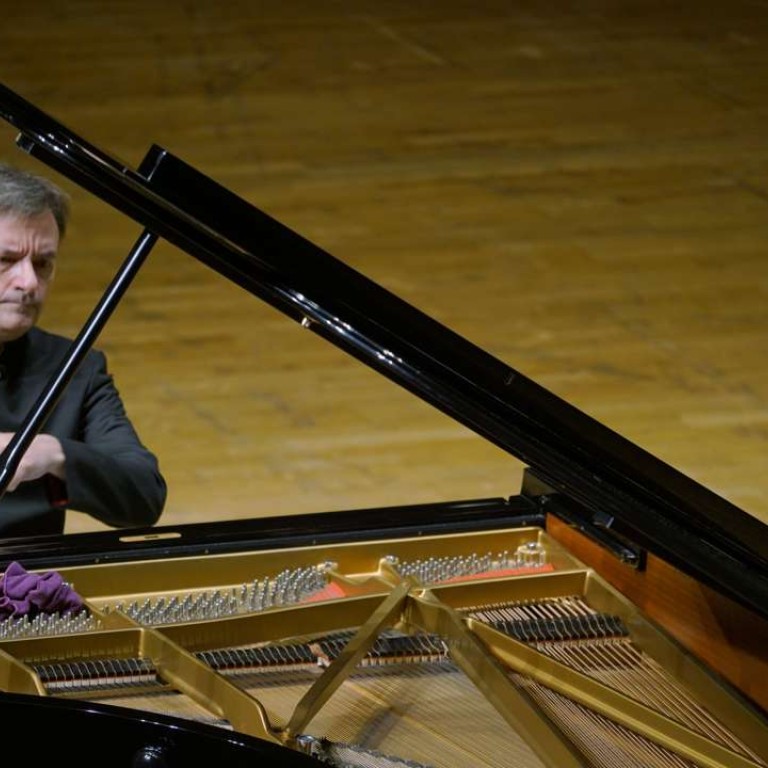
Review: Stephen Hough piano recital - control, clarity and a thrilling conclusion
British pianist gave a polished performance that went from engaging to exhilarating, with his own composition among the highlights
This was a thinking person’s piano recital. The hall was packed with attentive listeners, and they were engaged, if not swept away, by the first half. British pianist Stephen Hough did justice to the music’s logic, but like his jacket, the impression was a bit grey with just a hint of a scarlet lining.
Franz Schubert’s Piano Sonata in A minor, No 14, is a personal soliloquy, a blog rant rather than a classical drama. It opens with a dry morsel of a theme, curiously twining together major and minor. Hough, with quiet posture, shoulders hardly moving and hands relaxed, outlined the music’s moody, unpredictable course with a finely controlled touch. This coaxed the best out of the piano, creating a polished tone with never a harsh note, even in forceful octave passages. This piece is far from a Viennese bauble and Hough underlined the serious tone, getting slower and quieter to emphasise a turn of phrase. However, this hovering dampened the rhythmic drive and overall momentum.
Review: Stephen Hough in recital, 2008
César Franck’s Prélude, Chorale et Fugue also suffered from a sense of inertia, although it was redeemed by the end. The Prélude begins with swirling arpeggios and delicate, fragrant harmony. Hough’s use of the pedal was clean and the rhythm was appropriately free. The overlapping melodies between the hands were pleasingly interwoven without getting too densely contrapuntal. The Chorale has a thick chordal texture with the left hand crossing the right to pick out the melody. The closing fugue made for a resounding climax with fast-flying octaves played with a beautifully even touch.

The second half of the programme did more to sweep away the audience. In a refreshing return to tradition, Hough played an original composition, his Piano Sonata III Trinitas. If only more soloists followed suit – even a set of variations on a tune keeps the player fresh and gives them insight into composers’ minds.
The Sonata showed imagination, humour and skill. It was composed using a 12-tone row in the style of 20th century modernism, but Hough made a light-hearted use of this sometimes atonal, dissonant technique. Especially appealing were Lisztean galloping passages and swinging, jazzy rhythms. Little motifs flowing through the 12-tone harmonies sounded like the tinkling of an ice-cream truck in the distance. The familiar hymn Holy! Holy! Holy! was quoted in a slightly fractured version.
A group of pieces by Franz Liszt brought out the best in Hough’s playing – the fine control, clarity of architecture, plus mastery of the piano registers, from silvery treble to crunchy bass. The Valses Oubliées Nos 1 and 2 were drily witty. In the Études d’execution transcendante, Nos 11 and 10, it all came together in the classic Liszt texture: a tossing sea of notes with roaring octaves in the bass, an intense melody picked out in treble octaves, and in the mid-range pounding repeated chords. In the end the elegant melody was brought forward in gleaming relief and the flurrying octaves reached escape velocity for an exhilarating conclusion.
Stephen Hough Piano Recital, City Hall Concert Hall. Reviewed: May 30
